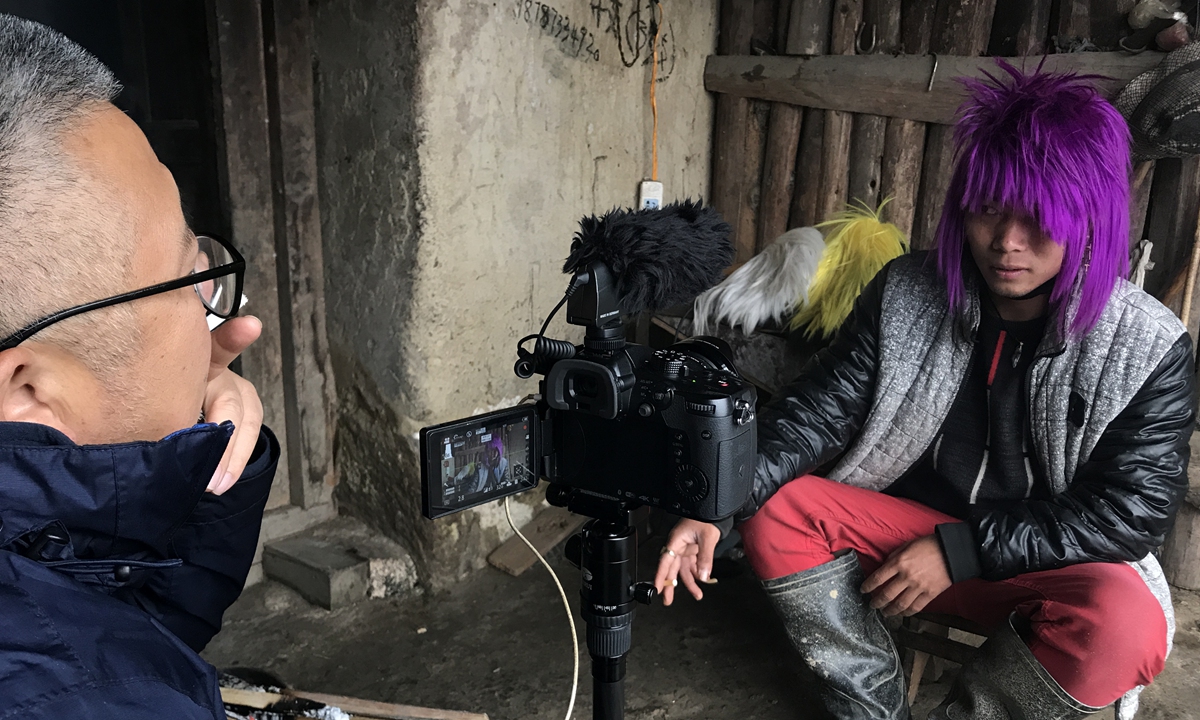ARTS / CULTURE & LEISURE
Young migrant factory workers form distinct Shamate subculture

Several female Shamate members Photo: Courtesy of Li Yifan
A new documentary, We Were Smart directed by Li Yifan, focuses on what's left of the Chinese subcultural group known as Shamate, which is still attracting younger migrant workers who are eager to express themselves.
Shamate refers to young people who wear unique style clothing and straight, bright colored hair with long bangs covering their forehead. Their showy hair is their symbol.
Li, who is also a teacher of Sichuan Fine Arts Institute in Southwest China's Chongqing Municipality, was first attracted to the subculture in 2012 at the height of its rising popularity. He considers Shamate the Chinese-equivalent of grunge or punk and a symbol of young people's aesthetic awakening.
"After talking with members of the subcultural community, I found Shamate is mainly found in factory districts," Li told the Global Times. "I tried to record Shamate culture through their lens."

Li Yifan (left) talks with a migrant worker. Photo: Courtesy of Li Yifan
Shamate still exists in post-2000s generation
Li and his team conducted face-to-face interviews with 67 young people who consider themselves Shamate, and talked to 11 others on social media. Li said that he wants his audience to understand the personal history of the special group of youngsters.
The young workers say the repetition of their work on assembly lines is boring and makes them depressed. During the workday they begin to question the meaning of life. "I felt like I was in a cage," was how Luo Fuxing, who was a generation Shamate, described his miserable as a factory worker.
Shamate culture helps the young worker to express their unique selves. Their community offers a home to the young workers who are far from their hometowns. Li followed them to their hometowns to show how they spend time at home.
From 2012 to 2018, Li and his team went afar such as South China's Guangdong Province where many Chinese migrants work, and Southwest China's Yunnan Province where many come from.
"I originally thought we would only find some old Shamate, who were born in the 1990s and had quit the community, but surprisingly we discovered Shamate culture in Guangdong. Most of them were born after 2000," said Li. In the town of Shipai town in Dongguan a local ice rink is their hangout.
The dilemma of young migrant workers shown by Shamate
"When I interviewed them, these young Shamate people said most often is they would rather never get into factory work, but many had to work in factories. How else can they earn a living?" Li said.
Li found that Shamate members have very similar experience. They dropped out elementary school and are from rural areas. Most of them were left-behind children whose parents worked in big cities.
Most of the young migrant workers who belong to Shamate culture have lost direction in life direction and have few goals, said Li. Although they wanted to live in cities they cannot afford to settle down there.
Li doubts Shamate culture will ever be as popular as it was decades ago.
Social media and mobile games have given young migrant factory workers a new challenge to vent congregate with others.
"The mocking Shamate received from society also cause the subculture's decline."

